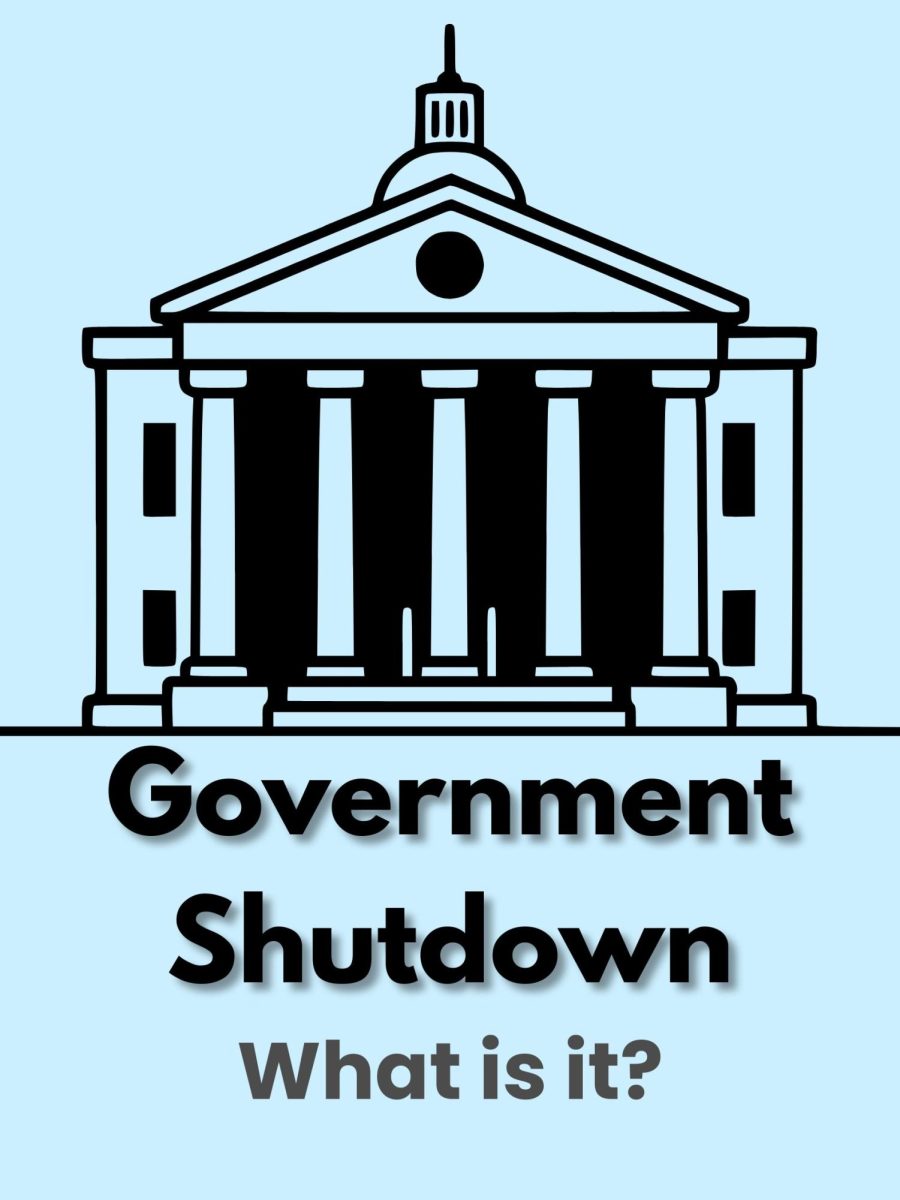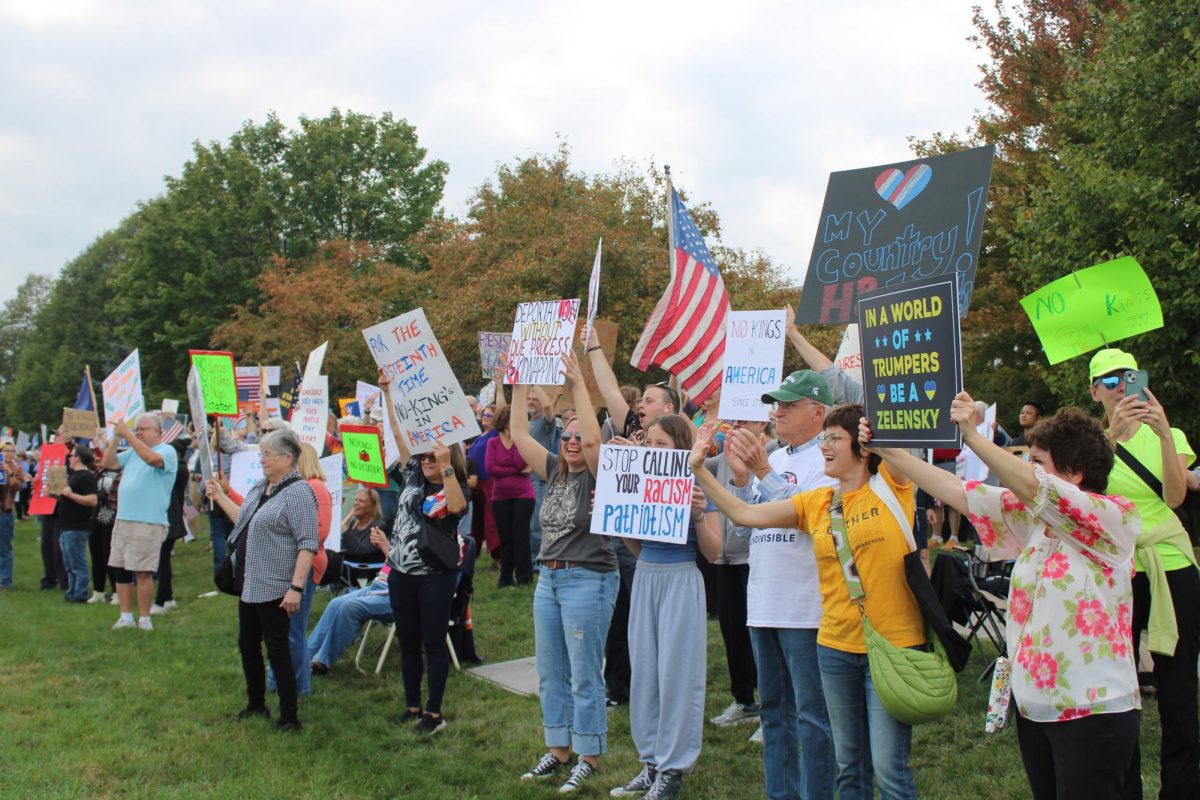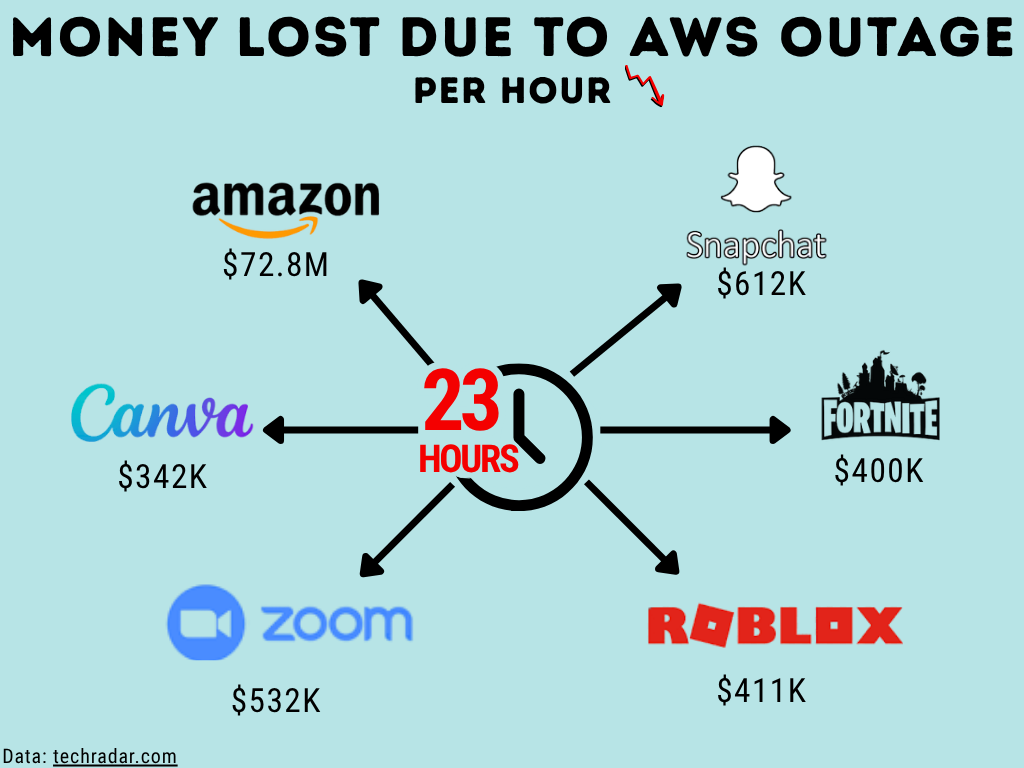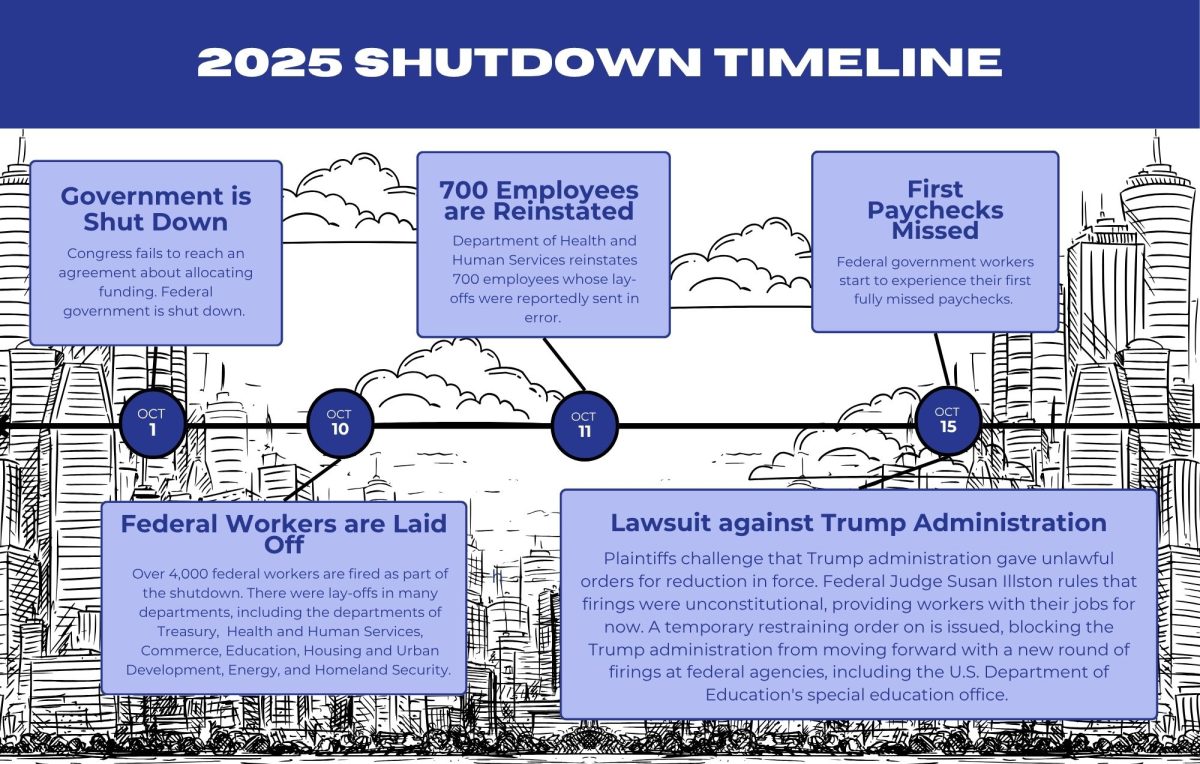The American government is currently shut down.
Every year Congress runs a fiscal year from Oct. 1 to Sept. 30 to decide a plan for government spending. The plan consists of 12 appropriation bills, and has to pass both the House of Representatives and the Senate. When the plan is not completed by the end of the fiscal year, the government shuts down. There are also bills that are a temporary fix, known as a continuing resolution, however; Congress failed to pass one as well. This results in a government shutdown.
The American government has shut down a total of 21 times. Some shutdowns have lasted a single day, whereas others have lasted 34 days. The last government shutdown was seven years ago in 2018. During that shutdown, the government lost approximately $18 billion in federal discretionary spending.
So what is a government shutdown? Since there is no allocation of funding, most government employees are furloughed. That means they are temporarily suspended from their jobs until Congress figures out where the government’s money should go. Essential workers are still expected to come into work, however they will not receive their pay until the government is running again. This will affect almost all government agencies.
Some common agencies and departments that are considered essential include Social Security, a program that provides retired workers with funding; Medicare/Medicaid, the department that provides federal aid to those financially challenged and elderly; Federal Law Enforcement, otherwise known as police; Immigration and Customs enforcement, better known as ICE; U.S. Customs and Border Protection, a department that protects against unlawful international trading; and Air Traffic Control, the department responsible for directing planes.
In the last government shutdown, most of the essential workers continued to show up for the first few weeks. However, as the shutdown continued and they were still not paid, some began to call off of work. This led to long lines in airports caused by a shortage of TSA workers. If the government shutdown is short, it is unlikely to affect the daily lives of most Americans. If it is longer, the issue of shortages of workers in essential services will affect many Americans. Seeking service in areas like social security, government funding for education and post offices will not be ideal.
This government shutdown is also different from past shutdowns due to the introduction of reductions in force, or RIF. This policy has been encouraged by President Donald Trump. The idea is that while some of these workers are furloughed, they are also officially and permanently laid off. The goal is to cut about 300,000 workers by the end of the year in an effort to downsize the government.
There is a lot of blame circulating about this government shutdown. It is important to check any information you see online in order to make sure you are not digesting or spreading misinformation.









